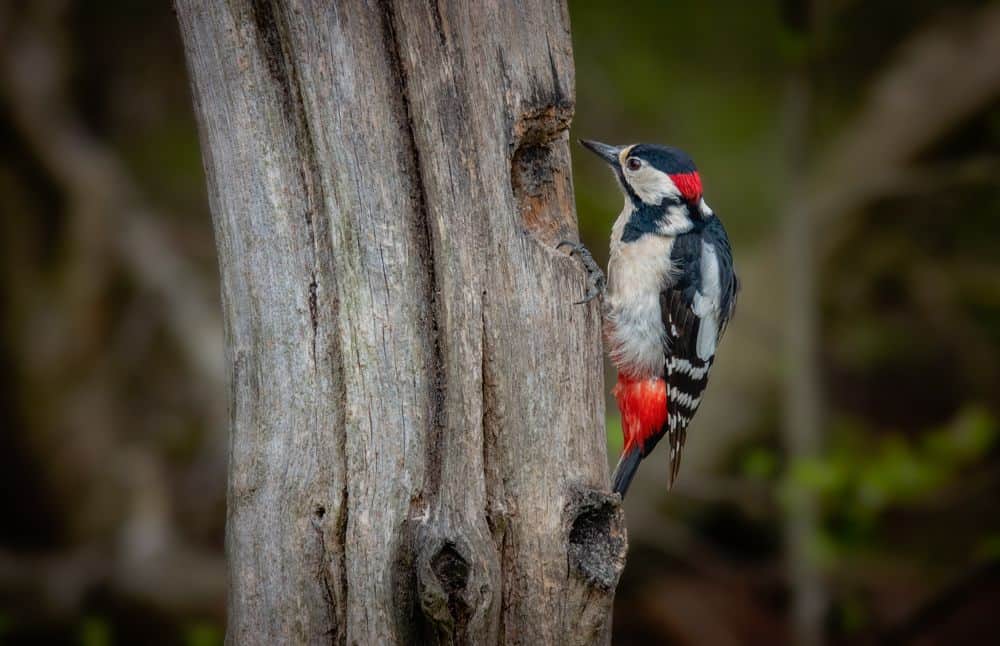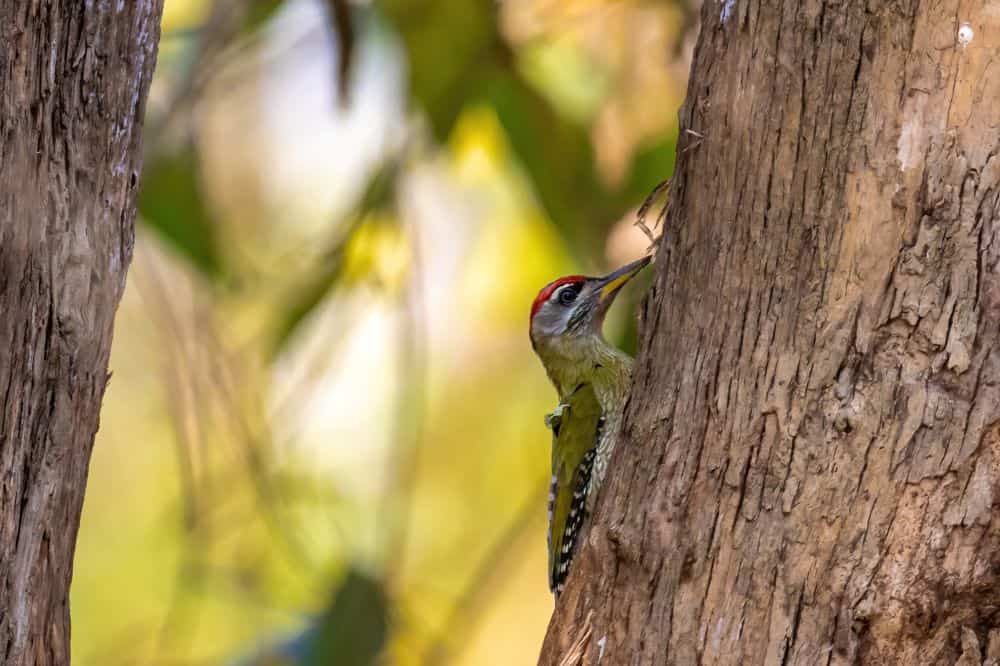Nestled within the expanse of your vibrant garden, a symphony of taps echoes through the morning air. The conductor of this unique orchestra? A woodpecker.
Woodpeckers, an interesting avian species, perform a delicate balancing act in nature; they can be helpful allies in controlling pest populations, but they may also pose a threat to our beloved trees.
Are woodpeckers being a nuisance in your yard? Keep on reading and learn more about the best things to do.

The Damage Woodpeckers Can Cause
Ah, the woodpecker – a fascinating marvel of nature, yet a potential nemesis for tree enthusiasts. The harmony between woodpeckers and trees can often take a discordant turn.
Notice the strange, rhythmic drumming from your tree canopies? That’s a woodpecker in action. They peck and drum on trees, in pursuit of insects or to carve out cavities for nesting. Attracting birds to your garden can have its benefits. But sometimes, they inadvertently turn arboreal benefactors into victims.
While these drumming sessions rarely harm healthy trees, the story alters for the infirm ones. Pecking can exacerbate existing health issues in trees, accelerating their decline. More so, repeated pecking can lead to unwanted holes, exposing trees to pests, disease, and harsh weather elements.
Preventive Measures to Deter Woodpeckers
From ornamental to fruit trees, we need a proactive approach to ensure the best protection. Our goal isn’t to wage a war against these pecking maestros but rather to orchestrate a harmonious coexistence. So, how can we gently nudge them off stage when their performances pose a risk to our trees?
Physical Deterrents
Ever noticed how a random glint of sunlight can catch your attention? Woodpeckers experience this in a much-amplified way. Reflective objects are among the most efficient deterrents.
Consider hanging foil tapes, old CDs, or metallic wind chimes. Their unpredictable flashes of light and gentle clattering noises can create a sensory disturbance that woodpeckers prefer to avoid. Be creative! A mobile made from shiny, recycled materials not only serves as a deterrent but also adds a quirky charm to your garden.
More so, bird netting, when correctly installed to maintain a gap between the tree and the net, prevents woodpeckers from reaching the tree bark without causing them harm. Alternatively, tree guards can be used to protect the trunk, particularly helpful for younger or smaller trees. They act as a physical barrier, disrupting the woodpecker’s ability to drum effectively.
Alternative Food Sources
Woodpeckers peck for a purpose – they’re either in search of food or creating nesting sites. You can turn their focus away from your trees by providing a more easily accessible food source. Set up suet feeders or bird feeders filled with their favorite foods (nuts, berries, or seeds) at a safe distance from your trees. This approach satiates their hunger without sacrificing their tree bark.
Commercial Deterrents
The market is teeming with products designed specifically to deter woodpeckers. Bird-safe repellent sprays or gels can make your trees less appealing to these birds. These products often have a taste or texture that woodpeckers dislike, discouraging them from revisiting treated trees. Citronella oil might also work. Use an environmentally friendly product and one approved by wildlife agencies. A word of caution – commercial deterrents should be a supplement to, not a substitute for, other preventative measures.
Implementing Best Practices in Landscape Management

As we embrace the preventive measures mentioned earlier, we must not overlook the broad strokes of effective landscaping habits. These practices might seem unrelated, but they play a pivotal role in maintaining an ecosystem where woodpeckers and trees can coexist without undue harm.
Regular Pest Control
Woodpeckers are nature’s pest controllers, often targeting trees infested by insects. Regular pest control keeps these unwelcome guests at bay, reducing the lure for woodpeckers to drum on your trees. It’s like removing the ‘Free Food Here’ sign from your tree trunks.
Native Plantings and Biodiversity
Promoting a diverse garden can also help. Consider integrating native plants into your landscaping. These plants typically attract a wide array of local birds, distributing the attention of woodpeckers across more hosts, thereby reducing the damage to any single tree.
Furthermore, a richly diverse garden may provide alternative food sources and nesting opportunities for woodpeckers, lessening their dependence on your trees. The result? A lively, bustling garden with balanced bird activity that doesn’t cost the health of your trees.
Conclusion
The drumming woodpecker, once seen as a disruptive player, can be understood and addressed with care, diligence, and effective strategies. By harmonizing non-harmful preventive measures with ecologically mindful gardening, we create a stage where both trees and woodpeckers play their part beautifully.